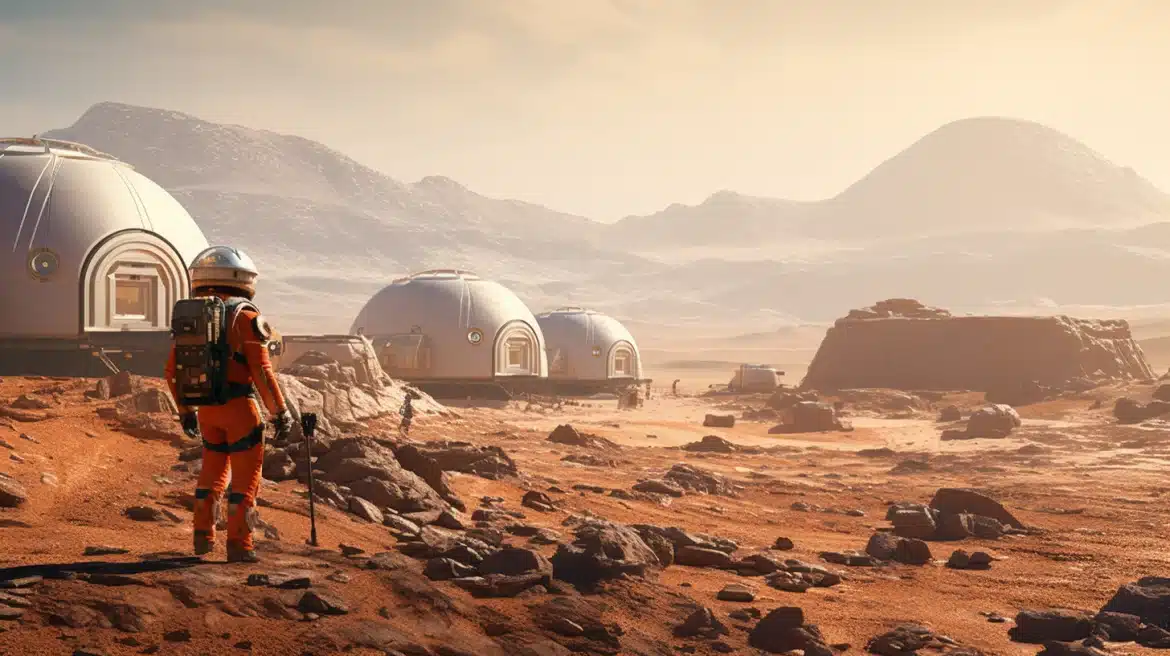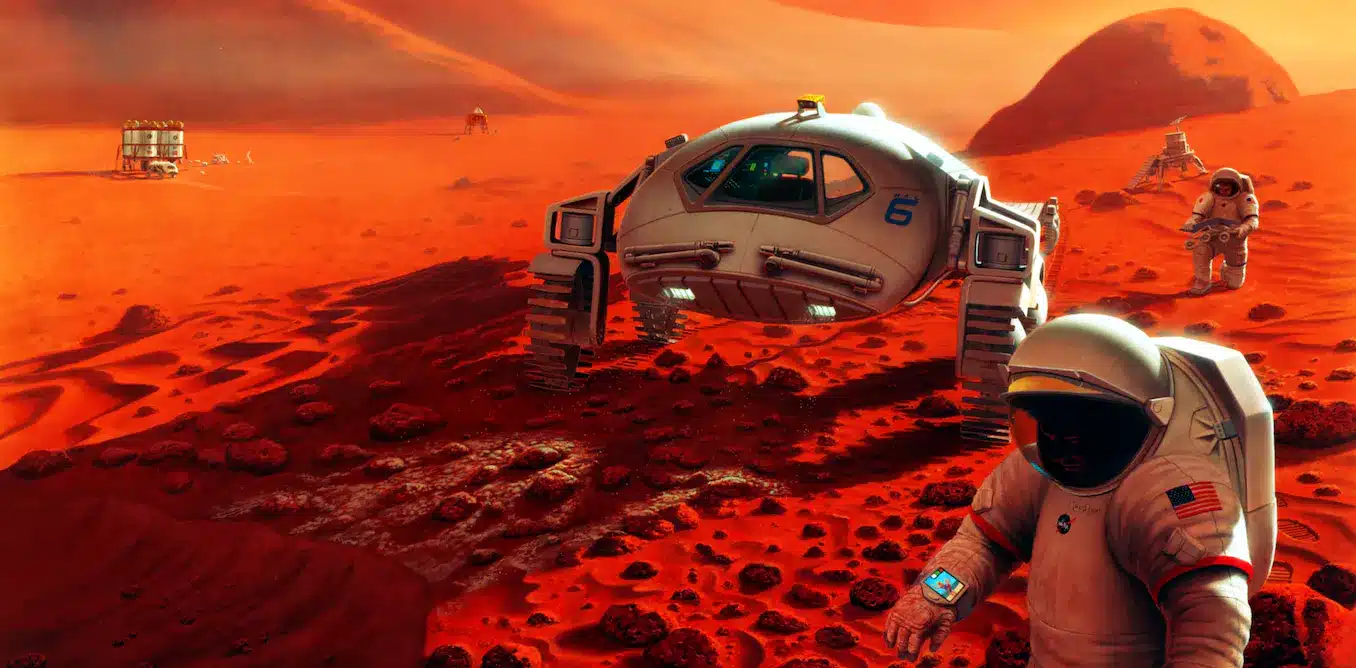Are you wondering what it’s like to live on Mars and become a Martian someday? We all thought about living on another planet when we were kids.
But as we grow, we realize that the reality is starkly different from what we believe can happen.
Mars, also known as the red planet, has a very hostile environment, and it is generally not suitable for the human race to strive there without the need for advanced equipment to protect themselves.
Mars has become a planet project for renowned scientists, space agencies, and governments to explore.
Therefore, certain factors must be considered before we can even imagine living on Mars and inhabiting a hostile planet like that.
In this article, we will explore the possibility in detail and learn about the various advancements we have already made to live on Mars.
Let’s get started!
Key Factors Affecting Humans on Mars
1. Atmosphere and Climate
Mars, also known as the “Red Planet,” has an atmosphere completely different from what our bodies are used to on Earth.
Mars’s atmosphere is primarily a mixture of carbon dioxide, minute traces of nitrogen, and argon, and the overall atmosphere is around 100 times thinner than Earth’s.
The thin atmosphere cannot support human life without the intervention of extensive technological and medical assistance.
The absence of a robust magnetic field also has profound implications for the livability of Mars. Compared to Earth, the Earth’s magnetic field acts as a shield and deflects harmful solar radiation and cosmic rays.
Since this protection is missing on Mars, the planet is often exposed to high radiation levels, which makes the planet inhospitable for human life to survive.
Moreover, Mars often has extreme temperature fluctuations, ranging from bone-chilling -73 ° C at night to reaching the highest of 20° C in daytime. This variation itself will prove harmful to the human body.
Furthermore, Mars is notorious for its massive dust storms, which can take over the entire planet and last for months.
These storms pose significant challenges for any human exploration or colonization efforts.
2. Water and Resources
Water is a fundamental source and essential for sustaining any life on Mars. You must know that Mars has been confirmed to have water at its poles and possibly underground.
But the problem lies in accessing and utilizing this water because of the characteristics of the Martian soil.
The Martian soil, known as regolith, contains perchlorates, which are toxic to humans. For safety reasons, extracting water from this soil requires advanced technologies and rigorous purification processes to ensure success.
Beyond water, other essential resources such as oxygen for breathing and nitrogen for agricultural purposes are scarce on Mars.
The challenges lie in developing sustainable technologies to extract, recycle, and produce these resources on Mars.
The extraction should be easy if humans ever wish to inhabit Mars. This would require innovation to create a closed-loop ecosystem that supports human life in the harsh Martian environment.
3. Health and Biology
The biological challenges posed by Mars’ unique environment are profound, hard to ignore, and not yet fully understood. One of the most significant challenges is the planet’s reduced gravity, approximately only 38% of Earth’s.
This will make you lighter on Mars and increase other problems due to the severe lack of gravity.
For instance, prolonged exposure to this reduced gravity could lead to various health issues, including loss of bone density, muscle atrophy, and potential cardiovascular problems.
Additionally, Mars’ thin atmosphere and lack of a protective magnetic field will expose humans to high radiation levels, leading to life-threatening illnesses like cancer.
Furthermore, the Martian soil contains compounds that are toxic to humans, such as perchlorates, requiring caution and thorough research before any human contact or habitation.
4. Technological Challenges
The process of establishing a human presence on Mars brings several technological challenges. First and foremost is the development of spacecraft; it should be capable of safely transporting humans to Mars and back.
The spacecraft would need to be equipped with advanced life-support systems capable of sustaining human life for the duration of the journey, which could span several months or even a year.
Once humans land on Mars, constructing homes and societies that can save humans from radiation, extreme temperatures, and dust storms is crucial to survival.
These habitats must be equipped with advanced life-support systems to provide a steady supply of oxygen, water, and food.
Overcoming these technological hurdles would require further innovation, collaboration, and investment in various fields of science and engineering.
Establishing a human presence on Mars represents one of human history’s most ambitious and challenging tasks.
5. The Path Forward
Despite these challenges, there is growing interest and investment in Martian exploration and colonization for the selfish needs of humans.
Organizations like NASA, SpaceX, and others have outlined ambitious plans for human missions to Mars in the coming decades, but we have yet to see how they will pan out.
Some missions on Mars, like Curiosity, sent robotic explorers to the planet. It provided valuable insights into the Martian environment, paving the way for future human missions.
Conclusion
While the prospect of humans living on Mars is riddled with challenges, it is not entirely impossible.
With continued scientific research, technological innovation, and international cooperation, the dream of establishing a human colony on Mars could one day become a reality, and humans can have a second home.
However, it’s essential to approach this mission and dream with utmost caution, recognizing the inherent risks and uncertainties involved. Mars may be our next-door neighbor, but it remains a harsh and unforgiving environment that will test human survival and perseverance’s limits.


